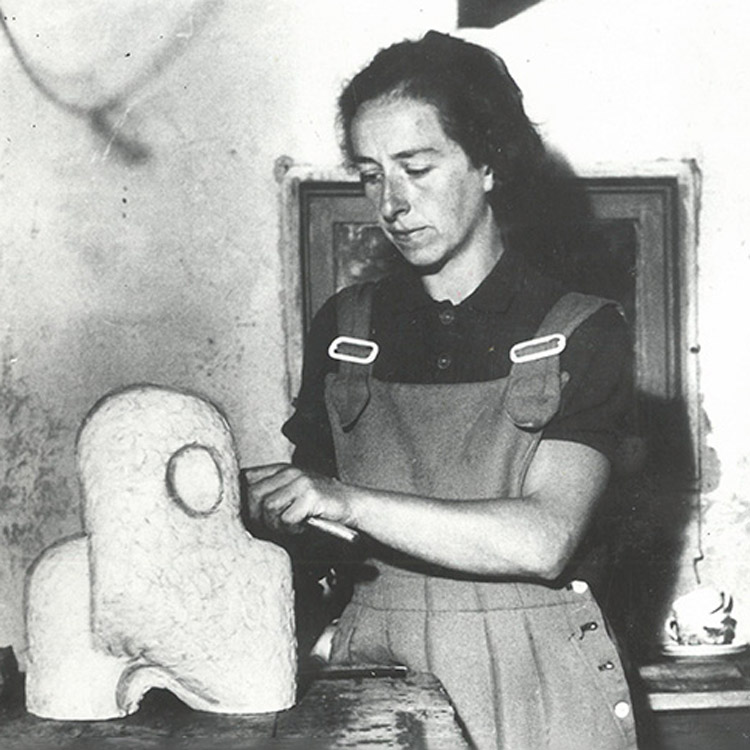Items for sale
Guy Atkins
-
 2502/649Lyngby
2502/649LyngbyGuy Atkins, Asger Jorn, Troels Andersen: Two books and two lithographic cover. One signed. Size variates. (4)
Selling
Estimate :
2,000 DKK Next bid: Your bid:
-
 2502/655Lyngby
2502/655LyngbyAsger Jorn: “Artistes Libres. Première serie du bibliotheque de Cobra”. 15 volumes with original litographed covers. 17.5x13 cm.
Selling
Estimate :
4,000–6,000 DKK Next bid: Your bid:
-
 2502/657Lyngby
2502/657LyngbyAsger Jorn: "Vive la revolution pasioné”, (1968) printed in 2022, Paris. Lithographic poster in colours cropped into four parts Visible size 49×31 cm.
Selling
Estimate :
4,000–6,000 DKK Next bid: Your bid:
-
 2502/659Lyngby
2502/659LyngbyAsger Jorn, Guy Ernest Debord: L'internationale Situationniste 1959. In orig. sandpaper wrappers.
Selling
Estimate :
4,000–6,000 DKK Next bid: Your bid:
Pierre Alechinsky
-
 2503/503Aarhus
2503/503AarhusPierre Alechinsky: Untitled. Signed Alechinsky, 12/30. Engraving in colours on letter. Sheet size 35 x 21 cm.
Selling
Estimate :
10,000–12,000 DKK Next bid:
-
 2503/775Aarhus
2503/775AarhusPierre Alechinsky: Composition. Signed Alechinsky, 47/99. Lithograph in colours. Sheet size 56 x 45 cm.
Selling
Estimate :
5,000–6,000 DKK Next bid: Your bid:
-
 2503/906Aarhus
2503/906AarhusPierre Alechinsky, Gilbert Lascault: "Arrondissement". Signed. Lithograph. Sheet size 31 x 47.5 cm. And cover. (2)
Selling
Estimate :
6,000 DKK Next bid:
-
 2503/907Aarhus
2503/907AarhusPierre Alechinsky, Gilbert Lascault: "Arrondissement". Signed. Lithograph. Visible size 24 x 29.5 cm. Cover and book pages. (3)
Selling
Estimate :
5,000 DKK Next bid: Your bid:
Corneille
-
 2502/562Lyngby
2502/562LyngbyCorneille: “Couple de l'été”, 1987. Signed Corneille 87, HC 9/15. Engraving in colours. Sheet size 52 × 40 cm. Unframed.
Selling
Estimate :
2,000 DKK Next bid: Your bid:
-
 2502/571Lyngby
2502/571LyngbyCorneille: Untitled. Signed Corneille, 77/99. Painted wood. 38 x 28 x 8 cm.
Selling
Estimate :
4,000–6,000 DKK Next bid: Your bid:
-
 2502/589Lyngby
2502/589LyngbyCorneille: Two compositions. Both signed. Lithograph in colours. Sheet size 51 x 63 cm. Unframed. (2)
Selling
Estimate :
3,000 DKK Next bid: Your bid:
-
 2502/604Lyngby
2502/604LyngbyCorneille: Three compositions. All signed. Silkscreen in colours. Sheet size variates. Unframed. (3)
Selling
Estimate :
3,000 DKK Next bid: Your bid:
Egill Jacobsen
-
 2503/905Aarhus
2503/905AarhusEgill Jacobsen: "Fem farvemasker", 1992. All signed. Five lithographs in colours. Visible size 76 x 47 cm. (5)
Selling
Estimate :
8,000–10,000 DKK Next bid:
-
 2503/908Aarhus
2503/908AarhusEgill Jacobsen: Mask composition. Unsigned. Indian ink and watercolour on paper. Visible size 59.5 x 44.5 cm.
Selling
Estimate :
5,000 DKK Next bid:





























